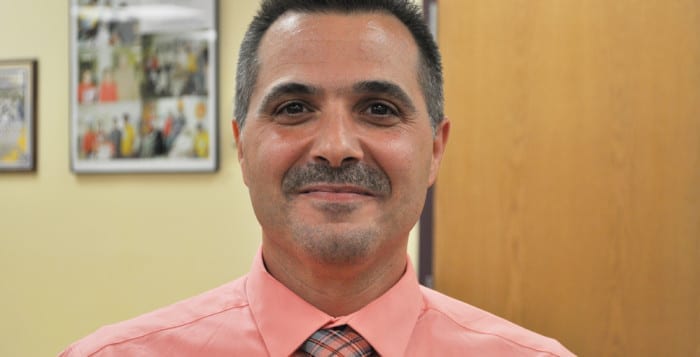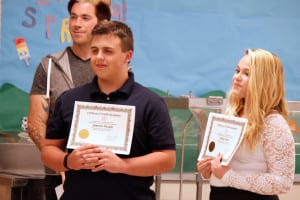It is very interesting that the amount of coverage by the lay press concerning thyroid nodules does not reflect the number of people who actually have them. In other words, more than 50 percent of people have thyroid nodules detectable by high resolution ultrasound (1); however, when I searched the New York Times website, the last time it wrote about them was in 2010.
Regardless, you can understand how coverage should be more in the forefront. Fortunately, most nodules are benign. A small percent, 4 to 6.5 percent, are malignant, and the number varies depending on the study (2). Thyroid nodules are being diagnosed more often incidentally on radiologic exams, such as CT scans of the chest, MRI scans, PET scans and ultrasounds of the carotid arteries in the neck (3).
There is a conundrum of what to do with a thyroid nodule, especially when it is found incidentally. It depends on the size. If it is over one centimeter, usually it is biopsied by fine needle aspiration (FNA) (4). This is the cutoff point for asymptomatic nodules found with a radiologic exam. Most are asymptomatic. However, if there are symptoms, these might include difficulty swallowing, difficulty breathing, hoarseness, pain in the lower portion of the neck and a goiter (5).
FNA biopsy is becoming more common. In a recent study evaluating several databases, there was a greater than 100 percent increase in thyroid FNAs performed over a five-year period from 2006 to 2011 (6). This resulted in a 31 percent increase in thyroidectomies, surgeries to remove the thyroid partially or completely.
However, the number of thyroid cancers diagnosed with the surgery did not rise in this same period. To make matters even more confusing, from 2001 to 2013, the number of thyroid cancers increased by 200 percent.
The study authors call for a need for more detailed guidelines, which are lacking for thyroid nodules.
Though the number of cancers diagnosed has increased, the mortality rate has remained relatively stable over several decades at about 1,500 patients per year (7). Thyroid nodules in this study were least likely to be cancerous when the initial diagnosis was by incidental radiologic exam.
DIFFERENTIATING WHEN FINE NEEDLE ASPIRATION RESULTS ARE INDETERMINATE
As much as 25 percent of FNA biopsies are indeterminate. We are going to look at two modalities to differentiate between benign and malignant thyroid nodules when FNA results are equivocal: a PET scan and a molecular genetics test. A meta-analysis (a group of six studies) of PET scan results showed that it was least effective in resolving an unclear FNA biopsy. The PET scan was able to rule out patients who did not have malignancies significantly but did not do a good job of identifying those who did have cancer (8).
On the other hand, a recent molecular-based test was able to potentially determine whether an indeterminate thyroid nodule by FNA was malignant or benign (9). This test was a combination of microRNA gene expression classifier with the genetic mutation panel. I know the test combination sounds confusing, but the important takeaway is that it was more effective than previous molecular tests in clarifying whether a patient had a benign or cancerous nodule.
Unlike in the PET scan study above, the researchers were able to not only rule out the majority of malignancies but also to rule them in. It was not perfect, but the percent of negative predictive value (ruled out) was 94 percent, and the positive predictive value (ruled in) was 74 percent. The combination test improved the predictive results of previous molecular tests by 65 to 69 percent. This is important to help decide whether or not the patient needs surgery to remove at least part of the thyroid. The trial used hospital-based patients, but follow-up studies need to include community-based practices.
IS A NEGATIVE FINE NEEDLE ASPIRATION DEFINITIVE?
We know that FNA is the gold standard for determining whether patients have malignant or benign thyroid nodules. However, a negative result on FNA is not always definitive for a benign thyroid nodule. When this occurs, it is referred to as a false negative result. In a recent retrospective (looking back at events) study, from the Longitudinal Health Insurance Database in Taiwan, 62 percent of thyroid nodules that were cancerous were diagnosed with one biopsy and 82 percent were found within the year after that biopsy (10). However, about 17 percent of patients needed more than two FNA biopsies, and 19 percent were diagnosed after one year with cancerous thyroid nodules.
THE POTENTIAL SIGNIFICANCE OF CALCIFICATION ON ULTRASOUND
Microcalcifications in the nodule can be detected on ultrasound. The significance of this may be that patients with microcalcifications are more likely to have malignant thyroid nodules than those without them, according to a small prospective study involving 170 patients (11). This does not mean necessarily that a patient has malignancy with calcifications, but there is a higher risk. The results demonstrated that more than half of the malignant thyroid nodules, 61 percent, had microcalcifications.
THE GOOD NEWS
As I mentioned above, most thyroid nodules are benign. The results of a recent study go even further, showing that most asymptomatic benign nodules do not progress in size significantly after five years (12).
This was a prospective (forward-looking) study involving 992 patients with between one and four benign thyroid nodules diagnosed cytologically (by looking at the cells) or by ultrasound. The factors that did contribute to growth of about 11 percent of the nodules were age (<45 years old had more growth than >60 years old), multiple nodules, greater nodule volume at baseline and being male.
The authors’ suggestion is that the current paradigm might be altered and that after the follow-up scan, the next ultrasound scan might be five years later instead of three years. However, they did discover thyroid cancer in 0.3 percent after five years.
In considering risk factors, it’s important to note that those who had a normal thyroid stimulating hormone (TSH) were less likely to have a malignant thyroid nodule than those who had a high TSH, implying hypothyroidism. There was an almost 30 percent prevalence of cancer in the nodule if the TSH was greater than >5.5 mU/L (13).
The bottom line is that there is an urgent need for new guidelines regarding thyroid nodules. Fortunately, most nodules are benign and asymptomatic, but the number of cancerous nodules found is growing. We are getting better at diagnosing nodules. Why the death rate remains the same year over year for decades may have to do with the slow rate at which most thyroid cancers progress, especially two of the most common forms, follicular and papillary.
REFERENCES:
(1) AACE 2013 Abstract 1048. (2) Thyroid. 2005;15(7):708. (3) uptodate.com. (4) AACE 2013 Abstract 1048. (5) thyroid.org. (6) AAES 2013 Annual Meeting. Abstract 36. (7) AACE 2013 Abstract 1048. (8) Cancer. 2011;117(20):4582-4594. (9) J Clin Endocrinol Metab. Online May 12, 2015. (10) PLoS One. 2015;10(5):e0127354. (11) Head Neck. 2008 Sep;30(9):1206-1210. (12) JAMA. 2015;313(9):926-935. (13) J Clin Endocrinol Metab. 2006;91(11):4295.
Dr. Dunaief is a speaker, author and local lifestyle medicine physician focusing on the integration of medicine, nutrition, fitness and stress management. For further information, go to the website www.medicalcompassmd.com and/or consult your personal physician.













